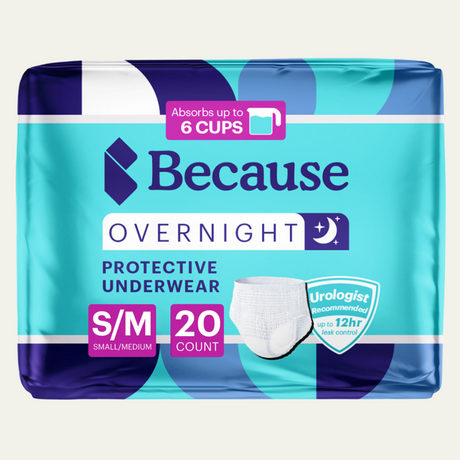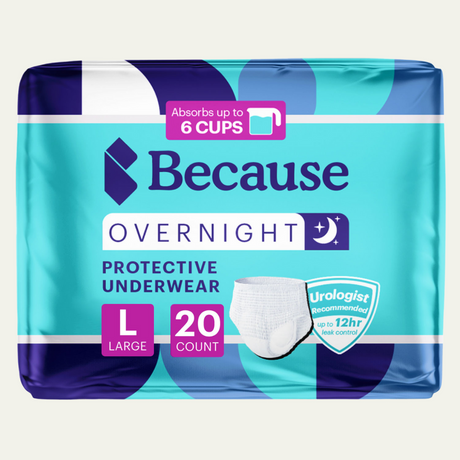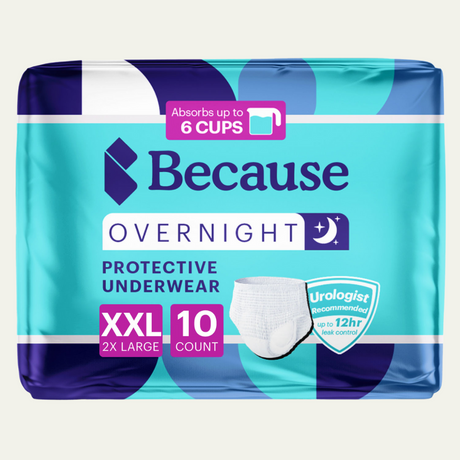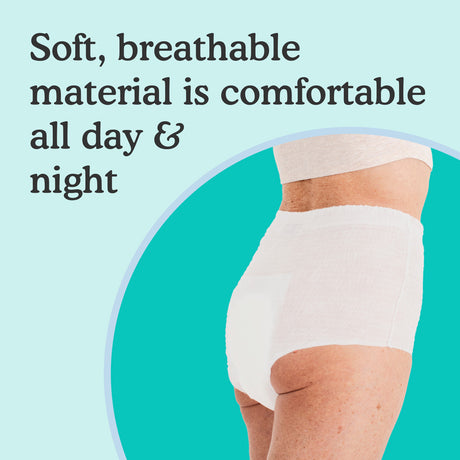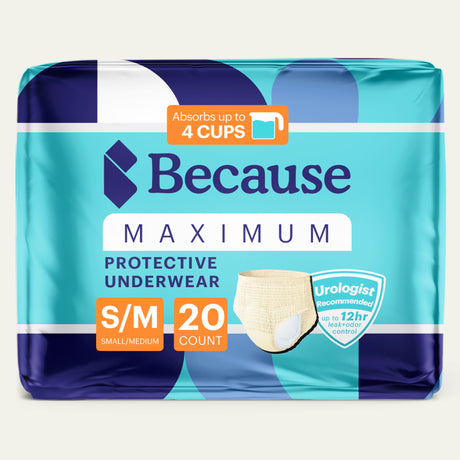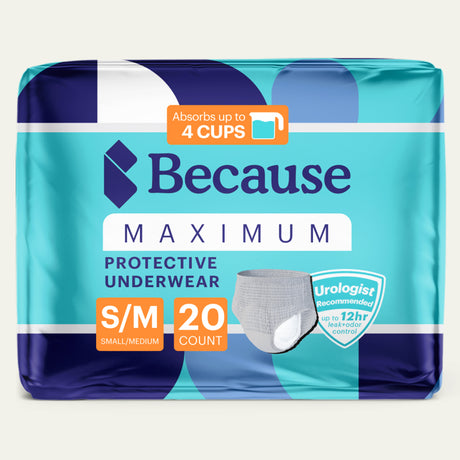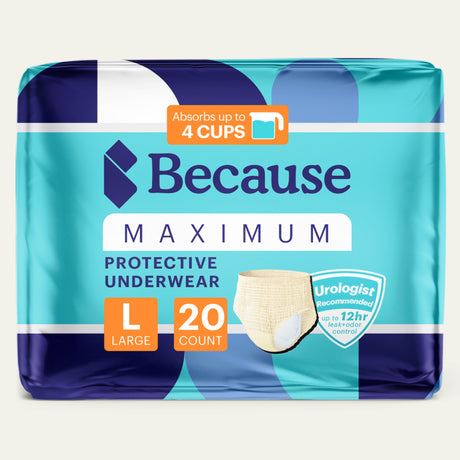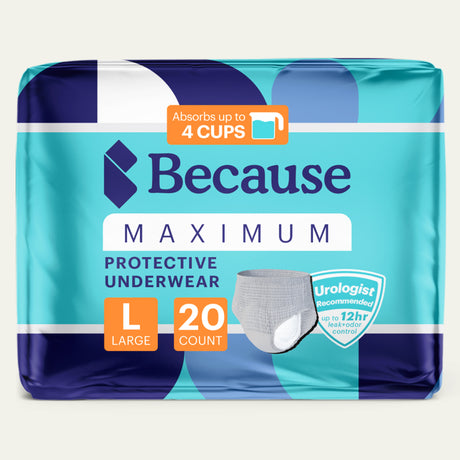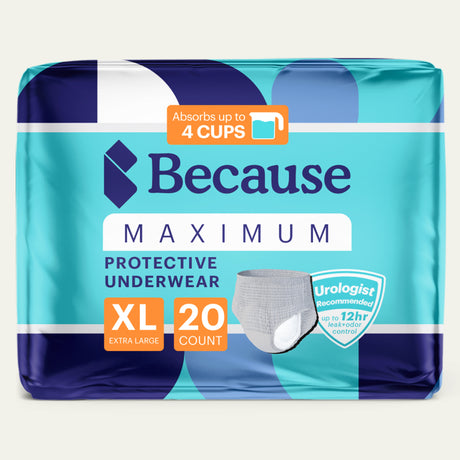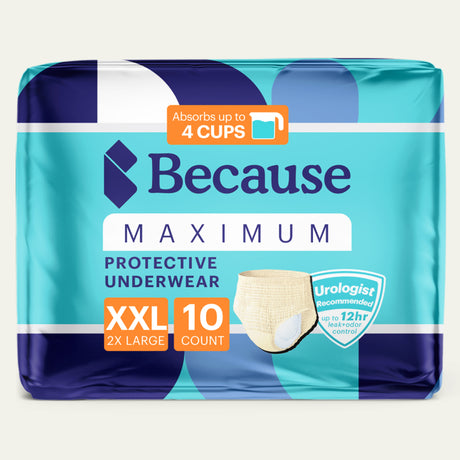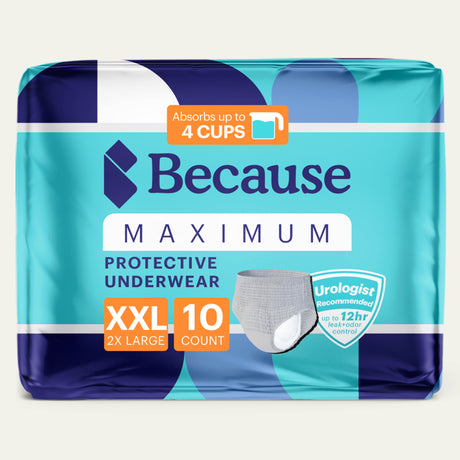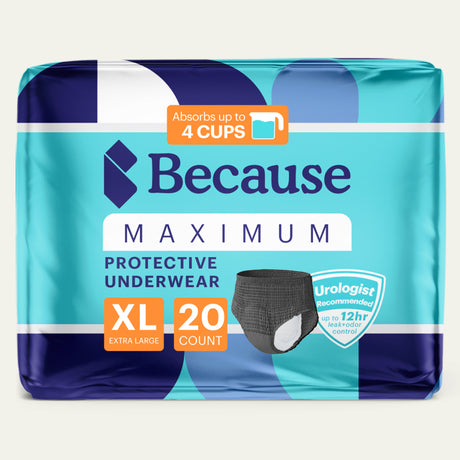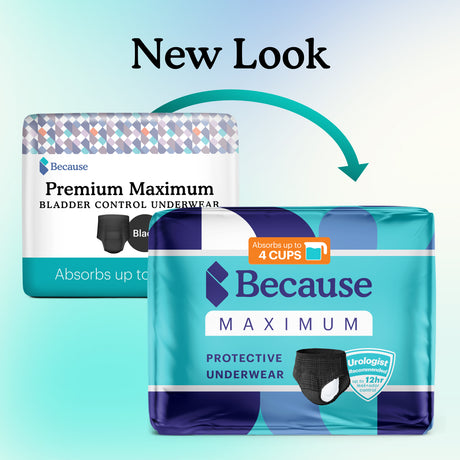As a caregiver, nurse, or home health care provider, you have a lot to juggle. You’re responsible for caring for a loved one or patient—making sure they have the food, medication, and support they need. Something that can add a layer of complication is when your loved one suffers from incontinence. Bladder leaks and bowel or fecal incontinence require the use of protective underwear or adult diapers, along with frequent changes and more involved clean-up.
This leads many caregivers to wonder “how often do you change an incontinent patient?” While there are no hard and fast rules, there are some guidelines you can follow to keep your family member or patient comfortable.
Feeling stressed as a caregiver? Check out our stress management tips for caregivers.
How Often Do You Change an Incontinent Patient?
How often to change adult diapers depends on the level of incontinence being dealt with, along with the person’s physical abilities. Severe bladder leakage or fecal incontinence requires more frequent changes for both hygiene and comfort, while someone with minor bladder leaks can go longer between changes.
Active Individuals with Incontinence
For individuals who have the physical abilities to use the restroom themselves or can use the toilet with some assistance, you’ll find you don’t need to change their incontinence pads or underwear as often. And, in fact, they may be able to change their incontinence products themselves.
While they may not be able to make it to the bathroom every time they get an urge, they can likely make it to the bathroom more often than not. This means they don’t need to change their protective products as often, as they won’t get wet or soiled as often. However, it’s worth keeping an eye on moisture that’s a result of perspiration, as even that kind of wetness can cause skin irritation. Even if their products aren’t soiled, it’s a good idea to change them at least a couple times a day for the sake of freshness.
Bed-Ridden Patients
Individuals who are bed-ridden not only require assistance when changing their incontinence products, but it’s also important to change their protective underwear or adult diapers more often. In general, expect a diaper change every 2-3 hours. However, if your loved one or patient is verbal, practice open communication and encourage them to share any time they’ve urinated or had a bowel movement so that you can change their products right away. This will keep them more comfortable and help avoid skin irritation or infection. Opting for protective underwear with tearaway side seams or tabs makes removal an easier process, and using bed protectors as a disposable underpad will keep their bed clean and dry during changes.
Patients with Cognitive Decline
For those dealing with cognitive decline, like Alzheimer's or dementia, caregivers will need to check in on their patients and make more frequent changes, as the patient may not be able to communicate when they have a soiled diaper. This requires much more vigilance, checking at least every 2 hours, but more frequent check-ins and changes will also reduce the amount of time it takes to clean up your patient and keep them more comfortable.
Have a loved one dealing with both dementia and incontinence? Be sure to read our guide for tips on daily management.
What Can Happen if Adult Diapers Aren’t Changed Often Enough?
When bladder protection underwear or even incontinence pads aren’t changed often enough, a person is at-risk for skin irritation, rashes, and infections. That’s why it’s not only important to not only do frequent check-ins for soiled diapers (whether caused by urine or fecal matter) but also practice proper incontinence skin care to prevent skin breakdown. For this, you need the right supplies. This includes cleaning the perineal and genital area during each change (we recommend using cleansing wipes or a no-rinse cleansing spray), followed by applying a barrier cream or diaper cream to protect the skin once the area is dry. As a caregiver, you may also want to use disposable gloves during changes, as well as having hand sanitizer gel or hand sanitizer wipes nearby.
Skin Irritation and Adult Diaper Rash
Irritation and rashes can easily occur when a person sits too long in soiled diapers or underwear. Whether the patient is mobile or not, prolonged exposure to moisture or fecal matter leads to chafing, skin irritation, and often adult diaper rash. If you start noticing pink or red patches of skin in the diaper area, or any inflammation, itching, or raised red bumps (all symptoms of diaper rash), that’s a good indication that protective underwear isn’t being changed often enough.
Increased Risk of a Urinary Tract Infection
Urinary Tract Infections, or UTIs, are caused by bacteria entering the urinary system. Since bacteria thrives in warm, moist environments, spending too much time in wet or soiled incontinence underwear can become a breeding ground for bacteria. That bacteria growth can result in UTIs, or even yeast infections. This is one more reason why it’s so important to change incontinence underwear soon after an episode occurs.
Tips to Reduce the Frequency of Adult Diaper Changes
How often should you change an elderly person's diaper? This partially depends on their physical abilities. While some incontinent patients require the frequent changes we mentioned above, some people have the physical and mental abilities to make it to the bathroom before they urinate, which reduces the necessary frequency of changing their bladder protection products. There are a couple of ways you can reduce the frequency of changes in those who are less at-risk for infection and irritation.
Choose the Right Incontinence Products
Choosing products with a higher absorbency rate can help keep individuals dry and comfortable. Looking for more absorbent products is especially important for overnights, as that’s the most common time for accidents and leaks. Some patients aren’t able to get up on their own in the middle of the night to use the bathroom, while others have uncontrolled incontinence episodes, waking or sleeping. For these patients, it’s particularly important to make sure they have the right overnight incontinence products and supplies.
Because Market’s Overnight Underwear not only absorbs up to six cups of urine, but it is also designed to quickly move liquid away from the body to keep you fresh and dry, even when you’re lying down. Boosters and incontinence pads or bed protectors are also great products to use at night to reduce leaks and keep loved ones and patients dry and comfortable throughout the night.
Read more about how to properly dispose of incontinence products.
Try Prompted Voiding for Physically Able Patients
For individuals who are physically able to use the toilet, work with them on creating a regular bathroom routine. Encouraging them to try to urinate every two hours or so will most likely reduce the frequency of accidents. This, in turn, will reduce how frequently their protective underwear needs to be changed.
Ensure Easy Access to the Toilet
For physically able patients, it’s also important that they have easy access to the toilet. If they feel the urge to use the bathroom but can’t make it there in time, it may not only feel discouraging to them but it also results in an unnecessary soiling of products and required change. Keeping the route to the toilet open and making it easily accessible from where they tend to sit or lay in the home will reduce accidents and the frequency of changes.
Need help finding the right incontinence products? Take our bladder protection quiz and receive a starter pack.
If you're struggling to care for a loved one with incontinence, join one of our private support groups today!


